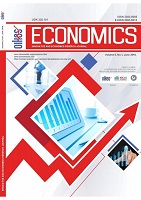International Application Model Short-Long Term between GDP and Consumption: Case Study Indonesia
International Application Model Short-Long Term between GDP and Consumption: Case Study Indonesia
Author(s): Teguh Sugiarto, Ludiro Madu, Ahmad Subagyo, Sugiyanto Sugiyanto, Achmadi AchmadiSubject(s): National Economy, Economic history, Economic policy, Government/Political systems, Post-War period (1950 - 1989), Transformation Period (1990 - 2010), Present Times (2010 - today), Fiscal Politics / Budgeting
Published by: Oikos institut-Istraživački centar Bijeljina
Keywords: ARDL; cointegration; granger causality; GDP; consumption;
Summary/Abstract: More recently, significant fluctuations in the Indonesian economy justify the need to pay more attention to this issue. In this case, the main purpose of this research is to know the relationship between two issues related to Indonesian macro economy called consumption and GDP for data period during 1967 until 2014. This study investigates the relationship between GDP variables and Indonesian consumption consumption variables using the test ARDL, cointegration and Granger causality. The result of the research can be concluded that, there is long-run equilibrium relationship between GDP and consumption with long-term ARDL model, 10% change of consumption will produce long-term change of 44% in GDP. It is not surprising that there is no short-run equilibrium relationship between GDP and consumption. 10% of consumption will result in a short-term ARDL model change of 95% in GDP. The variables and consumption of GDP are cointegrated in the long run significantly at lag interval 10, whereas the use of lag interval 1 and 5 is not credited in the long run. Using a cointegration test with lag interval 1, 5 and 10 indicates significant for all usage slowness. So it can be summarized in the context of GDP and coordinated short-term economic consumption for all the prevailing interval lags. Concluded that long-term causality test results between GDP variables and significant consumption with time intervals 5 and 10. Intervals 1, 15 and 20 have no long-term causality relationship between GDP variables and consumption variables. A short-term causal model. With lagging intervals of 1, 5, 10 and 15, there is a short-term causal relationship between the variable GDP and consumption. As for the use of delay interval 20 there is no causal relationship in the short term between the variable GDP and consumption in Indonesia.
Journal: ECONOMICS-INNOVATIVE AND ECONOMICS RESEARCH JOURNAL
- Issue Year: 6/2018
- Issue No: 1
- Page Range: 81-90
- Page Count: 10
- Language: English

